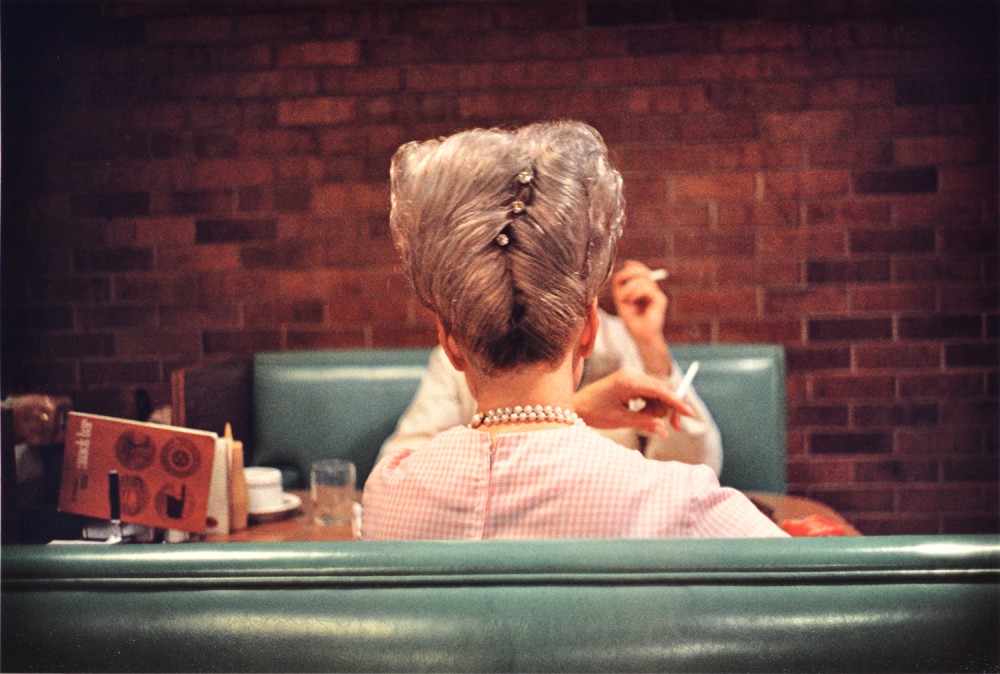
William Eggleston: Los Alamos
Los Alamos
While driving through New Mexico in 1973, William Eggleston stopped at Los Alamos, the forested site of the atomic bomb's clandestine development. He chose Los Alamos as the title for a sprawling body of work then nearing completion: approximately twenty-two hundred images photographed between 1965 and 1974.
This title cloaks with some irony Eggleston's ostensible subjects, yet acknowledges his belief in the aesthetic consequences of his private quest.
The photographs that make up this selection from Los Alamos begin at the beginning, with the first color photograph Eggleston made, of a grocery clerk pushing a shopping cart; include the center of his world—Memphis and the Mississippi Delta; trace his travels west from New Orleans to Las Vegas and southern California; and end on the Santa Monica Pier
That day in New Mexico, passing through the pifion woods of the Jemez Mountains, past the guard gates of the National Laboratory, Eggleston turned with a small smile and said, "You know, I’d like to have a secret lab like that myself." It seems clear from the investigations collected in Los Alamos that he already had found the key to his proper place of research.
William Eggleston was born in Memphis, Tennessee in 1 939 and lives there still. He is frequently referred to as 'the father of color photography'. Cataloging the environs of the American South, Eggleston has arguably become the most influential photographer of the last 40 years.
In 1 976, curator John Szarkowski mounted the first exhibition of color photography at a major museum—MoMA—entitIed Eggleston's Guide. The impact of Eggleston's use of color was equivalent to Dylan going electric. Eggleston broke with traditional subject matter and composition; the image of a tricycle taken from the ground render it as monumental as Half Dome. Szarkowski summed up the exhibition by saying, "It demonstrated to a lot of young photographers not only that you could photograph in colour, but you could photograph the humble vernacular of your own life."
The exhibition was panned by critics who characterized the work as 'vulgar'. Szarkowski said that "Eggleston's pictures are perfect." To which the foremost critic of the day Hilton Kramer replied, "Perfect? Perfectly banal, perhaps." He was no Ansel Adams—nor was he Walker Evans. He inhabited a world far different than that of his peers.